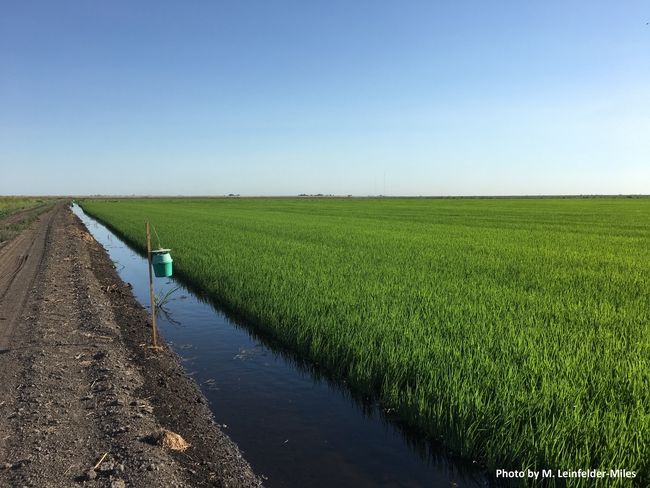
We can use trap counts and Growing Degree Day modelling (i.e. a temperature measure of time) to determine whether and when to treat fields. UC IPM provides treatment guidelines that include damage assessment and signs of the worms in the field. Earlier this year, Methoxyfenozide (Intrepid 2F) received full registration, so we now have a new tool in the toolbox when treatment is necessary.
The monitoring that I do in the Delta is part of a larger effort that is spearheaded by my colleague, Luis Espino, rice advisor in Butte and Glenn counties. Luis writes a weekly blog to provide real-time information on trap counts to help growers and consultants with scouting and decision making. In his blog announcements, he will link to an interactive mapping tool called Ag Pest Monitoring, where you can view counts across trapping locations. Please consider subscribing to Luis Espino's blog, but don't hesitate to reach out to me if you'd like to discuss what is happening in the Delta.
Good luck this season, and I hope to see you in the field!
Attached Images:
